Aluminum material, with its advantages of lightweight, high ductility, corrosion resistance, and low cost, has become the preferred material for metal spinning, especially suitable for the production of small and medium-sized, complex curved surfaces, and lightweight parts. Yixing can achieve high-precision aluminum spinning parts through CNC spinning machines and annealing processes, meeting the needs of various fields such as industry, home furnishings, and aerospace.
Aluminum is one of the most popular metals for spinning due to its exceptional workability. Its soft, malleable nature allows for seamless shaping, making it ideal for both basic and intricate designs that would be challenging with harder metals like stainless steel.
Beyond its ease of fabrication, aluminum is corrosion-resistant, making it a top choice for marine and outdoor applications. Additionally, its lightweight properties enhance functionality without compromising strength. The material can also be finely finished through sanding and polishing for a smooth, professional appearance.
Common aluminum spinning products include protective covers, lighting components, cookware, domes, cones, and spherical forms—each tailored to precise specifications.
.jpg)
.jpg)
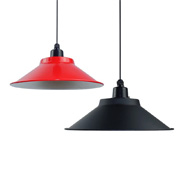
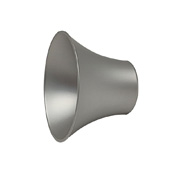
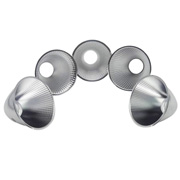
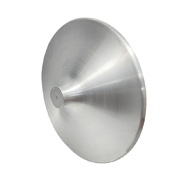
The process advantages of spin forming in forming rotating parts with thin walls, light weight, high strength, high precision and good fatigue resistance are irreplaceable. It is precisely because of these advantages, especially the improvement of strength, hardness and fatigue resistance of parts after strong spinning, that spin forming technology has been widely used in the manufacturing of parts in the automotive, military and aerospace fields.
1. Excellent Formability
Pure aluminum (such as 1050, 1060) and some aluminum alloys (such as 3003, 5052) have extremely high ductility and can be spun with large deformation at room temperature without cracking.
Compared to steel or stainless steel, aluminum requires less pressure for spinning and has lower mold wear.
2. Lightweight
The density of aluminum (2.7 g/cm ³) is only one-third of that of steel, making it suitable for manufacturing lightweight components such as drone shells, car wheel hub covers, and aerospace parts.
3. Increased strength after spinning
After spinning, the strength and hardness of the material are about 35%~45% higher than that of the parent material, which enables spinning technology to effectively reduce the design wall thickness of parts, reduce weight, and improve the fatigue performance of parts.
4. Good surface quality
After aluminum spinning, the surface is smooth and can meet most appearance requirements (such as lamps and decorative parts) without additional polishing.
Further surface treatments such as anodizing, sandblasting, and electroplating can be carried out for different application requirements.
5. High material utilization rate
Spinning is a non cutting forming process that directly forms aluminum plates, with a low waste rate (compared to CNC machining, it can save 30% to 50% of materials).
6. Suitable for complex geometric shapes
The plasticity of aluminum allows for deep drawing and multi pass spinning, which can realize complex surfaces such as parabolic lampshades and conical tank heads.
7. Corrosion resistance
Aluminum naturally forms an oxide film, and 5xxx (aluminum magnesium) and 3xxx (aluminum manganese) alloys have excellent corrosion resistance, making them suitable for outdoor or chemical environments.
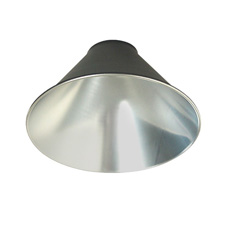
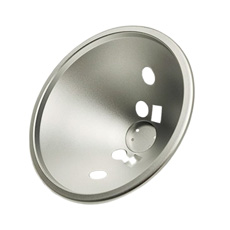
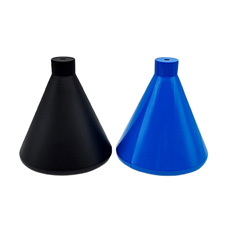
Aluminum materials are very suitable for metal spinning due to their excellent ductility, but not all grades can be used for aluminum spinning. The more commonly used spinning materials are pure aluminum (1xxx series), aluminum-manganese alloy (3xxx series), and aluminum-magnesium alloy (5xxx series). Different material grades have different strength levels and are suitable for different application scenarios. If you are not sure what grade to choose for spinning, please send us the drawings and product functions and usage environment, and our experienced engineers can give you advice.
1. Pure aluminum series (1xxx series)
Features: excellent ductility, easy to form, but low strength, suitable for deep spinning of complex shapes.
Typical grades:
AL1050:Purity ≥ 99.5%, excellent soft state (O state) spinning performance.
Application: lamps, decorative parts, kitchen utensils (such as pots, kettles).
AL1060:Purity ≥ 99.6%, slightly higher cost than 1050, suitable for ordinary spinning parts.
Applicable scenarios: thin-walled parts with low strength requirements and high formability.
2. Aluminum-manganese alloy (3xxx series)
Features: good corrosion resistance, moderate strength, suitable for metal spinning parts requiring certain rigidity.
Typical grades:
AL3003
Adding manganese (Mn), the strength is 20% higher than pure aluminum, and still maintains good ductility.
Application: chemical containers, automobile fuel tanks, building domes.
Applicable scenarios: spun parts that require corrosion resistance and medium strength.
3. Aluminum-magnesium alloy (5xxx series)
Features: high strength, corrosion resistance, good weldability, but strong tendency to work hardening (annealing treatment is required).
Typical grades:
AL5052
Magnesium (Mg) content is 2.5%, high strength and good formability (O state or H32 state).
Application: ship parts, electronic housings, automobile hub covers.
AL5083
The magnesium content is higher (4.5%), and the strength is close to low carbon steel, but multiple annealing is required for spinning.
Application: aerospace structural parts, high pressure vessels.
Applicable scenarios: metal spinning parts with high load or corrosion resistance in marine environments.
4. Aluminum-magnesium-silicon alloy (6xxx series)
Features: can be strengthened by heat treatment, but annealing (O state) is required before spinning, and aging hardening is required after forming.
Typical grades:
AL6061
Excellent comprehensive performance (strength, weldability, corrosion resistance), but the difficulty of spinning is higher than that of the 5xxx series.
Application: precision machinery parts, drone fuselages, sports equipment.
Applicable scenarios: complex structural parts that require post-heat treatment.
5. Other special grades
2024 (aluminum-copper alloy): high strength, but poor spinning performance, usually used for machining rather than spinning.
7075 (super-hard aluminum): rarely used for spinning (easy to crack), limited to special military needs.
In addition to the aluminum spinning process, we also have stamping and deep drawing equipment for aluminum stamping and deep drawing.
Aluminum spinning is usually used to produce axisymmetric parts (such as hemispheres, cones, lampshades, etc.), with low mold costs (only simple core molds are required), low production efficiency, and more suitable for small batch production.
Aluminum stamping is usually used to punch, bend or shallow stretch sheet metal with molds, and is commonly used to make simple structure and large batch parts such as electronic casings, automotive components, etc. Stamping mold cost is usually higher than metal spinning but production efficiency is also high, suitable for large-scale production.
Aluminum deep drawing is commonly used to produce deep cavity parts such as cans and cups, with higher production efficiency and higher mold costs than spinning, making it suitable for large-scale production.
We can determine which process is more suitable based on the customer's design, materials, and demand.
To learn more about the difference between metal spinning, deep drawing and stamping!